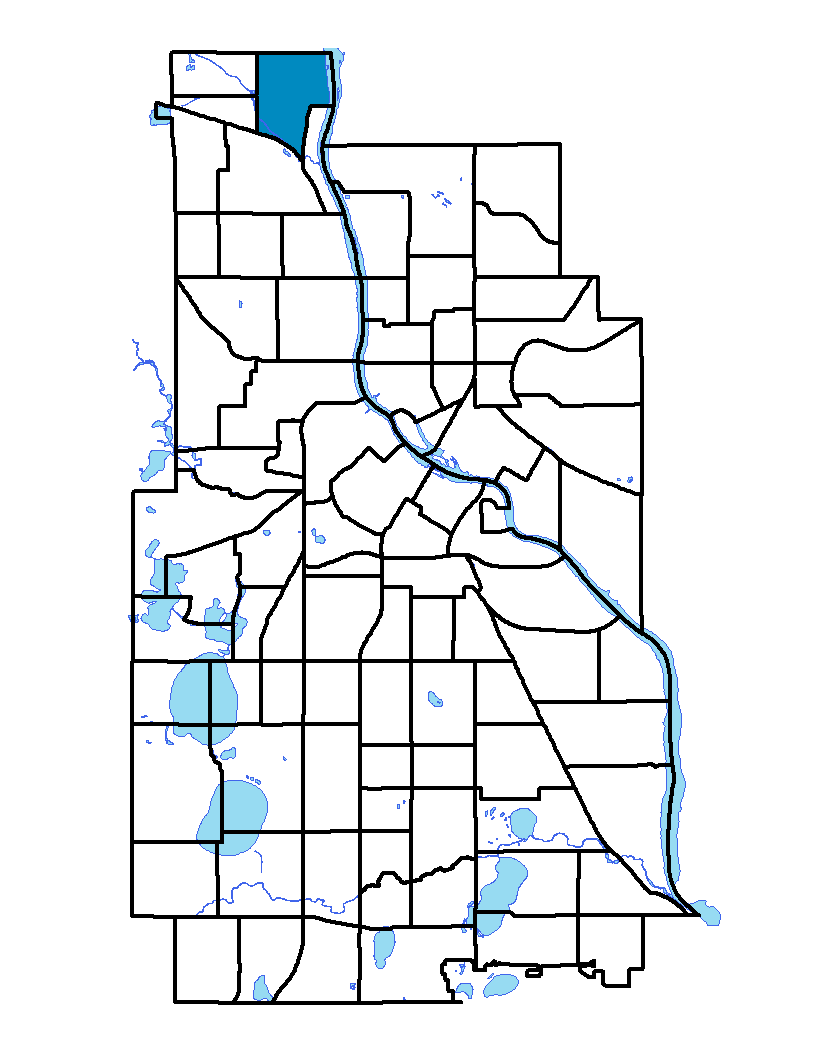Lind-Bohanon, on Minneapolis' far north side, is bounded on the north by 53rd Avenue North (the city's boundary with Brooklyn Center) and extends east to the Mississippi River. An industrial area eventually comes between Lind-Bohanon and the river, causing the neighborhood's eastern border to shift at 48 th Avenue North to Lyndale Avenue North. This border extends south to the Canadian Pacific Railway tracks. On the west, the neighborhood's boundary is Humboldt Avenue North. Lind-Bohanon covers more than 500 acres and is smaller than one square mile. The neighborhood and its elementary school are named for Jenny Lind, a famous Swedish soprano born in the first half of the 19 th century. The neighborhood has a low resident turnover rate, with some families residing there for two or three generations. The homes are generally modestly priced compared to the rest of Minneapolis.
To learn more about the neighborhood association visit: www.lindbohanon.org
Indicator Details
| Indicators |
Primary Domain |
Indicator Value | Rank | Tier |
|---|---|---|---|---|
| Transit Accessibility | Transportation | 163.4 | 81 | Bottom |
| Commute Mode Share | Transportation | 13.9% | 81 | Bottom |
| Household Transportation Costs | Transportation | 19.1% | 76 | Bottom |
| Pedestrian Connectivity | Transportation | 184.4 | 11 | Top |
| Residential Mobility | Social Cohesion | 83.9% | 25 | Top |
| Voter Participation | Social Cohesion | 15.5% | 73 | Bottom |
| Walkability | Neighborhood Characteristics | 31 | 80 | Bottom |
| Offsite Alcohol Outlets | Neighborhood Characteristics | 1 | 6 | Top |
| Food Desert | Neighborhood Characteristics | 100.0% | 31 | Middle |
| Tree Cover | Natural Areas | 30.3% | 23 | Top |
| Access to Parks and Open Space | Natural Areas | 8.8% | 30 | Middle |
| Violent Crime | Health Systems and Public Safety | 65.9 | 62 | Bottom |
| Chronic School Absence | Health Systems and Public Safety | 51.2% | 30 | Middle |
| Low Birth Weight | Health Systems and Public Safety | 10.2% | 61 | Bottom |
| Motor Vehicle Collisions | Health Systems and Public Safety | 2.6 | 25 | Top |
| Preventable Hospitalizations | Health Systems and Public Safety | 8.1 | 70 | Bottom |
| Vacancy Rates | Housing | 13.5% | 75 | Bottom |
| Age of Housing | Housing | 78.6% | 29 | Top |
| Blood Lead Levels in Children | Housing | 2.3% | 25 | Top |
| Excessive Housing Cost Burden | Housing | 30.5% | 52 | Middle |
| Public Assisted Households | Employment Opportunities | 33.9% | 64 | Bottom |
| Employment Rate | Employment Opportunities | 60.8% | 67 | Bottom |
| Long-Term Unemployment | Employment Opportunities | 3.3% | 11 | Top |
| Travel Time to Work | Employment Opportunities | 24.5 minutes | 78 | Bottom |
| Residential Proximity to Traffic | Environmental Hazards | 13.4% | 51 | Middle |
| Proximity to Brownfield Sites | Environmental Hazards | 3.7% | 38 | Middle |
| School Proximity to Traffic | Environmental Hazards | 0.0% | 1 | Top |
| Proximity to Superfund Sites | Environmental Hazards | 0.0% | 1 | Top |
| Toxic Releases from Facilities | Environmental Hazards | 39.0% | 60 | Bottom |
| Reading Proficiency | Educational Opportunities | 13.9% | 27 | Top |
| Adult Educational Attainment | Educational Opportunities | 87.4% | 50 | Middle |
| High School Graduation Rate | Educational Opportunities | -% | - | Data N/A |
| School Readiness Scores | Educational Opportunities | -% | - | Data N/A |
| Preschool Enrollment | Educational Opportunities | 20.2% | 81 | Bottom |
| Business Retention | Economic Health | -0.5% | 61 | Bottom |
| Access to Mainstream Financial Services | Economic Health | 29.0% | 51 | Middle |
| Local Business Vitality | Economic Health | 46.0% | 66 | Bottom |

